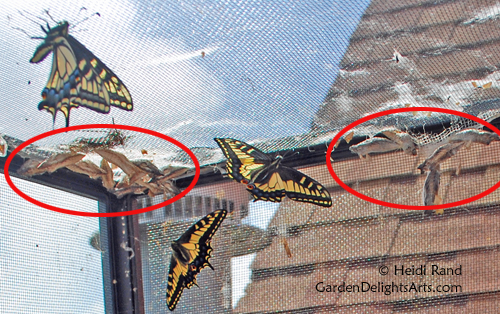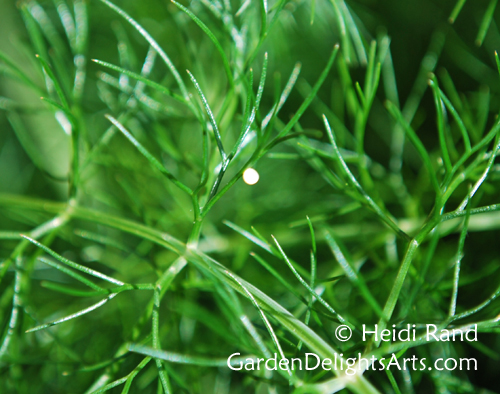This guest post written by my wonderful husband George McRae is very timely as California’s long-term drought worsens and it becomes more critical for people to conserve water.
Killing Our Lawn: Or, How We Made the Transition to a Wildlife Refuge, by George McRae
When Heidi and I moved into our house, I saw gardening as a selfish endeavor: vegetables, fruit, flowers were for the enjoyment of humans only. I even installed a lawn, from seed. Then I got involved in local environmental issues in El Cerrito. Creek restoration was at the top of the list, as a branch of Baxter Creek was at the back side of our home. Not wanting to get involved in a “lawn-envy war” with our neighbor, I roto-tilled our parking strip. I terraced it and planted what started out as an English cottage-style garden, but has evolved into a wildlife habitat. The photo on the left is our neighbor’s lawn, our native garden’s on the right.
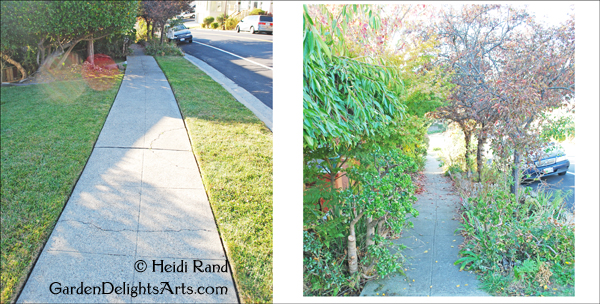
I started to read National Wildlife Federation literature about how local back and front yards, and even apartment balconies, are the best hope for many endangered species considering how much habitat is being destroyed by development.
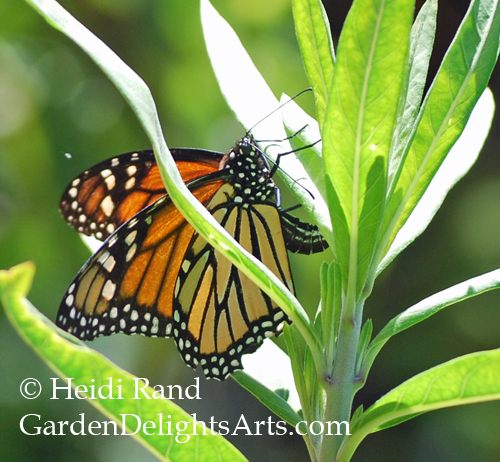
Monarch butterfly depositing an egg on milkweed
I began planting native California plants everywhere I could fit them in. Our philosophy evolved into, “if a local critter eats it or needs it, we’ll plant it.”
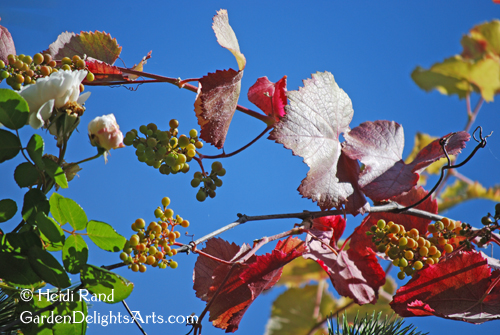
We registered as an NWF wildlife habitat. We provide food and water.

Also required: shelter and places for critters to raise their young. We’ve been rewarded many times over by birds, in particular hummingbirds, raising families here year after year.
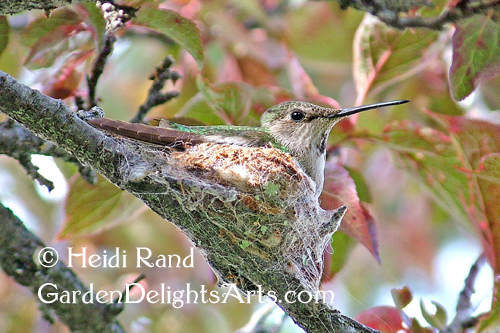
And insects galore! Monarch, Swallowtail, Skipper, Red Admirable (Admiral), Painted lady, Dragonfly…. an endless list of species, come here to lay eggs on the plants we provide them.
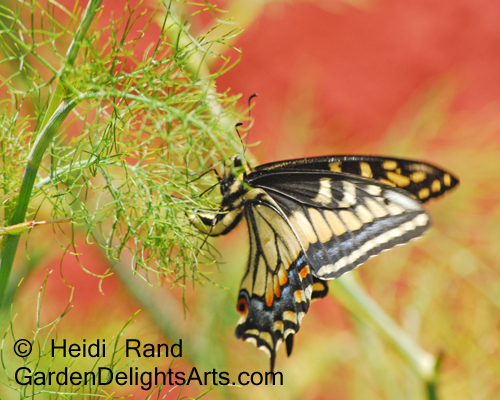
Other benefits? With the abundance of California native plants, our water bill is extremely low. We use no pesticides or fertilizers, so we’re not adding downstream pollutants to the biosphere. We evaluate any weed as a possible food source. If not, we hand pull. We use no herbicides, as they are proven amphibian killers. We rarely use power gardening tools, reducing our addition to air and noise pollution and global warming. We prune our trees and weed carefully and during seasons when we won’t upset nesting cycles of birds, insects and mammals.
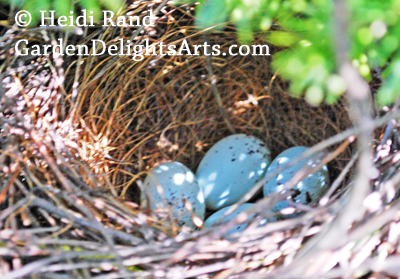
Towhee eggs in nest
W H A T C A N Y O U D O ?
1) Plant local native plants in as many varieties as possible, from grasses to flowering trees, like ceanothus. California bunch grasses have deep roots and hold soils together, preventing erosion and drawing deep moisture to the surface for other plants. Many butterflies use them as larval food sources. Grasses are the basis of a sound ecosystem.
Some local nurseries to learn more and buy natives:
California Native Plant Society (East Bay), Native Here Nursery
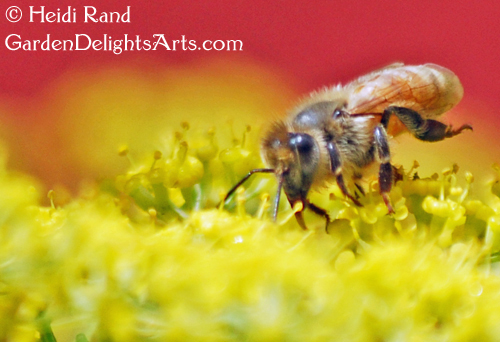
2) Before you prune, thin or remove trees, shrubbery or other plants, make sure you’re not disturbing nesting sites or life cycles for birds, insects or other critters making a home there. Late August through late November is best, but be aware that hummingbirds can nest all year long!
3) Certify your garden as a wildlife habitat through the National Wildlife Federation





